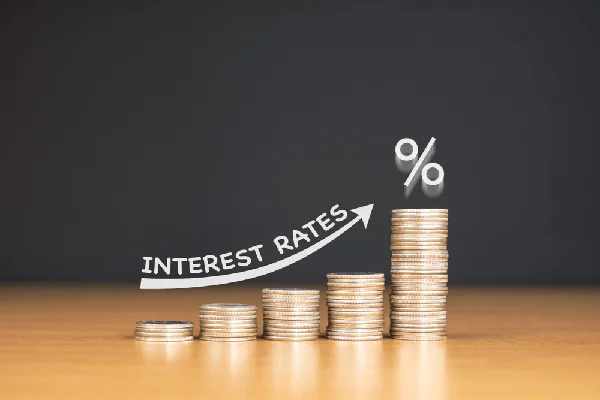News
Could a Green Mortgage Save You Money?
Jumping straight to the conclusion, the answer is yes: a green mortgage can be uniquely cost-effective. As can living in an energy-efficient home, where all possible efforts are made to minimise energy consumption.
Qualifying for a green mortgage means meeting certain eco-friendly criteria, either before buying the property or after moving in. Green mortgages are primarily issued for the purchase of energy-efficient homes, but incentives are also available for buyers who commit to improving the eco-friendliness of their properties within the first 12 months following their purchase.
The benefits of living in a green home
Along with preferential mortgage rates and lower overall borrowing costs, there are additional perks to living in a green home.
For example, energy consumption is significantly reduced in a green household, leading to lower energy bills. A green home will almost always be significantly cheaper to run, adding up to generous and continuous savings.
In addition, the market value of a green home is almost always higher than that of a comparable ‘brown’ home. This therefore means that most energy-efficient upgrades and improvements will almost always pay for themselves long-term.
It can also be far easier to obtain a mortgage for a green home than a conventional home, as lenders are increasingly showing preference to buyers setting their sights on energy-efficient properties.
How can I get a property to meet green mortgage criteria?
If your goal is to get your property up to scratch to meet official ‘green’ criteria, it can be done in a variety of ways. In fact, any improvements you make that help reduce your home’s overall energy consumption could help.
Examples of cost-effective yet highly efficient ways to boost energy efficiency include the following:
- Properly sealing windows and doors to eliminate drafts
- Upgrading to more energy-efficient lighting
- Insulating walls and attics or improving existing insulation
- Adding smart devices and controllers to reduce energy consumption
- Stepping up to better double or triple-glazed windows
- Central heating system upgrades
- Installation of renewable energy sources, like solar panels
On average, it is estimated that upgrading a property in the UK from an EPC rating of D to C would cost around £6,000. For a larger detached property, the cost increases to around £12,000.
But these are still the kinds of costs that could be augmented long-term by switching to a green mortgage. Or perhaps with the contribution they make to the market value of the property when it is put up for sale.
Independent broker support
There are numerous factors to consider and calculations to perform when establishing the cost-effectiveness of green home improvements. Examples of this include the size, specification, and value of the property in question, your outstanding mortgage balance, the specific renovations required, and your general financial circumstances.
This is where independent broker support can prove invaluable, enabling you to build a clearer picture of the options available. Making efforts to run a more energy-efficient home is always advisable and could prove more financially beneficial in some instances than others.
13% Mortgage Interest Payment Hike Forecast by 2023
Startling data published by the government’s independent forecasting unit indicates that homeowners could be headed for the biggest mortgage interest hike seen since 2008.
By 2023, overall interest payable on a mortgage could increase by as much as 13%.
Members of the Liberal Democrat Party have warned that for homebuyers with an average mortgage of £211,000, the increase would constitute an additional £500 in interest payments per year. However, investment firm AJ Bell said that the costs could be even steeper for those with larger mortgages, who may be looking at £1,000 more every year in interest payments.
Interest rates remain at historic lows
For the time being, Bank of England base rates are being held at an all-time low of 0.1%. But both the Bank of England and the UK’s leading economists have warned that significant increases to base rates over the coming year are inevitable.
Specifically, the consensus now points to an initial increase of 0.25%, followed by a further three increases of the same amount to take base rates back to 1% by the end of next year.
In response, many major lenders are already beginning to withdraw their most competitive mortgage deals from their offerings. Brokers have reported major shifts in the mortgage lending market across the UK, with a wide variety of price shifts having taken place during the last few days alone.
The Office for Budget Responsibility data now points to significant year-on-year increases in mortgage interest payments, which could see homeowners facing an increase in costs next year of around 5.6%. This is then predicted to increase to around 13% in 2023, after which it will return to 5.4% in 2024.
The upcoming hike would be the biggest recorded since 2008, potentially leaving millions of homeowners out of pocket.
Higher costs for all mortgage payers
The figures have become a major political point of contention, with the potential costs for all mortgage payers having been highlighted by the Liberal Democrats.
Commenting on the predicted hikes, the party stated that the average mortgage payer at a variable rate of 3.6% would be looking at around £42 per month in additional interest payments, or £510 per year. Those with fixed-rate home loans at 2% would be liable for an additional £25 monthly payment, adding up to £300 per year.
“This ghastly forecast should send a shiver down the chancellor’s spine,” said Sir Ed Davey, Liberal Democrat leader.
Speaking on behalf of AJ Bell, their head of personal finance predicted even greater costs for mortgage payers over the coming years.
“Someone with £250,000 of borrowing who fixed earlier this year and renewed in 2023 would see £600 a year added to their mortgage costs, while someone with £450,000 of borrowing would see their costs hike by £1,068 a year,” she said.
34% of buy-to-let property investors intend to expand their portfolios in 2022
According to a report for Shawbrook Bank, a third of all landlords are planning to expand their portfolios by at least one property in the year to come. Despite the COVID-19 pandemic causing so much disruption to the economy, house prices have continued to rise and are maintaining record levels, which, in turn, is encouraging landlords to buy with the prospect of high rental yields.
Of the 34% of landlords, 14% said that they predicted that they would buy more properties than they initially intended, indicating strong confidence in the rental market for the future.
Although house prices remain at record levels, there is an expectation that property prices will rise even further in the next 12 months, with 67% of landlords saying they are confident that will happen and therefore prepared to take the risk of further investment.
Not only are landlords willing to add to their portfolios in terms of quantity, but they are also looking to expand into other locations. According to the research, 13% have plans to buy in areas they would otherwise not usually consider. Of those landlords, 30% are planning on investing in properties in rural areas and 36% in urban areas. The most popular area of the UK is proving to be the north of England for rental investment, with 23% of landlords stating they were looking to expand in this region.
Another change is the type of property that rental investors are considering, with alternative property development becoming increasingly popular. Many renters are looking for more outside space due to the lockdowns, resulting in semi-detached (34%) and terraced houses (31%) increasing in popularity as opposed to flats. Flats do, however, remain a favourable investment at 27%.
Sales director at Shawbrook Bank, Emma Cox, said: “The resilience of the UK property market is clear from our research. Despite the hurdles caused by the pandemic, the market has stood firm, and house prices have continued to soar. This has created attractive opportunities for investors and property developers, whose confidence in the market has grown over the last 12 months. Their buying activity and trends show that the market is likely to remain strong over the short term.
“Indeed, with 2021 announced as the “busiest year” for the housing market, according to Zoopla, despite recent falls in transactions, it’s clear that the market has fully rebounded from the lows of the pandemic. As supply continues to be low, it’s unlikely that we’ll see house price growth slow significantly, and as we move into January next year following the seasonal slowdown over Christmas, property investors will be seeking further opportunities to expand their portfolios.”
The Top 10 Most Expensive Places to Live in the UK Outside London
We all know that property prices in London remain the highest in the country, but which other towns and cities are in the top ten when it comes to house prices?
- Virginia Water, Surrey
With the average house price coming in at £1,617,679, Virginia Water makes it to the top spot on Zoopla’s ‘rich list’, for the most expensive places to buy property in the UK. Portal Rise is the most expensive street, with the average house costing a whopping £7,046,149, closely followed by Wentworth Drive, where the average house will set you back £6,496,232, North Drive coming in at £6,237,670 and in fourth place Pinewood Road at £6.196,450.
The leafy suburb of Virginia Wood has seen a rise in property prices of 1.3% since September and an overall increase of 2.6% in the last 12 months. Terrace houses were priced on average at £1,045,875 while flats came in at £533,317.
- Cobham, Surrey
Another picturesque town, nestling on the banks of the River Mole in the popular county of Surrey, is Cobham, coming in at second place. Average prices of £1,239,868 make this a town only accessible to the wealthy, with a rise of 2.17% in the last quarter of 2021 and an increase of an incredible 11.09% from the same period last year. When looking at the types of properties sold, terrace houses cost around £551,532, while flats averaged £540,350.
- Beaconsfield, Buckinghamshire
Sitting on the edge of the Chiltern Hills, Beaconsfield is an area of outstanding natural beauty. Easy accessibility to London (25 minutes by train) makes this beautiful town popular with commuters. The average home here will set you back £1,232,359, representing a rise of 1.58% in the last 3 months and a yearly rise of 5.3%. The average flat will cost £591,253, while terraced properties show an average selling price of £648,184.
- Esher, Surrey
Situated on the south-east side of London’s leafy suburbs, Esher is a quiet and peaceful town despite its proximity to the capital. This town is very popular with buyers looking for the best of both worlds: the excitement of the city and the tranquilly of the countryside. Prices here currently sit at an average of £1,146,708, which is a rise of 1.76% during the last quarter and a 4.55% increase over the last 12 months. Flat prices are averaged at £531,622 and terraced properties at £659,058.
- Chalfont St. Giles, Buckinghamshire
Most commonly known as the background of many popular shows (Dad’s Army, The Canterbury Tales, and Peep Show, to name a few), Chalfont St. Giles may feel strangely familiar to those who have never actually visited there. It is also home to Milton Cottage, where the famous poem ‘Paradise Lost’ was penned by John Milton.
The average price of homes in this historical town is £1,139,493, which is an increase of 2.02% since the end of September and a 12-month overall rise of 9.08%. Flat prices average at £530,618; terrace houses show an average price of £608,428.
- Gerrards Cross, Surrey
Coming in sixth place, with an average property cost of £1,057,668, is Gerards Cross. As one of the most sought-after places to live in the UK, it’s not surprising this beautiful rural town has made it to the top ten. The last three months have seen a rise of 2.2% in house prices and a yearly increase of 4.58%. A flat here will set you back on average £538,058, with terrace houses averaging at £592,826.
- Radlett, Hertfordshire
The ancient village of Radlett dates back to before 5,000 BC and has been the home of many celebrities, including Simon Cowell and the late George Michael. You can buy a home here for the average price of £1,017,483 in this beautiful town. House prices have risen on average by 1.77% in the last 3 months and 3.65% over the last 12 months. In terms of property prices, flats will cost buyers £453,467 on average, whereas terrace properties will set buyers back £586,602.
- Weybridge, Surrey
The bustling town of Weybridge boasts a fantastic high street that winds through streets of mansions and manors and is home to some of the most prestigious private schools in the country. Average house prices in Weybridge are sitting at £1,012,920, reflecting an increase of 2.15% since the end of September and a rise of 6.49% from the same period in 2020. Flats are on average £471,716 while terraced houses are currently averaging £683,669.
- Ascot, Windsor, and Maidenhead, Berkshire
Home to world-famous racecourses, the resettlement of Ascot, Windsor, and Maidenhead offers top-quality properties in the beautiful countryside to the west of London.
Properties in Ascot are currently averaged at £990,918. This is a rise of 1.31% in the last quarter of 2020, and since September 2020, it has risen by 2.63%. In terms of the types of properties, flats showed an average of £570,937 and terraced houses £600,385.
Meanwhile, in Windsor and Maidenhead, average prices came in at £709,988, representing a three-month growth of 1.58% and a yearly rise of £541,301. Terraced houses were priced at £541,301 and flats at £417,865.
- East Molesey, Surrey
Last, but by no means least, East Molesey comes in at number 10 on Zoopla’s ‘rich’ list. This popular commuter town has an average house price of £986,356, with a current rise of 0.88% since the third quarter of 2020 and an increase of 1.69% over the last twelve months. When it comes to property types, flats average at £410,384 and terraced properties at £516,166.
Is Property Investment a Wise Move for 2022?
With property prices the highest they have been in 15 years, we look at the current housing market trends and determine whether investing in property is the best choice for 2022.
As we move into another stage of the pandemic, with possible restrictions and lockdowns looming, it’s not surprising that property prices are at the forefront of the conversation. With the COVID-19 virus causing unprecedented disruption to the economy and the way people socialise and work, office space, shops, and ultimately property prices have been severely affected.
Adding to the feeling of uncertainty, the expected dramatic rise in interest rates by the Bank of England, in an attempt to get inflation under control, is causing mortgage rates to rise, making homeownership an impossible dream for many.
Changed planning regulations, allowing property developers to convert former offices and commercial properties into residential properties, have allowed a flood of more affordable, accessible homes onto the market. Rental and property prices are not expected to go down any time soon due to a shortage of supply, resulting in cheap accommodation selling and renting at record speed.
Initially, the pandemic and the end of the stamp duty holiday were expected to be catastrophic for house prices, but they have been anything but. In fact, after an initial dip, prices in nearly all regions of the UK have been rising.
An agent from a well-known high-street agency commented, “We really need more stock. Warehouses, former industrial parks, and if offices are empty, convert them,” she says. International markets have reopened, and international investors are coming back. Post-Brexit, they are looking to invest”.
Wybo Wijnbergen, chief executive of Infinite Space, a Dutch-based, pan-European commercial agency specialising in flexible working spaces, commented: “To say the commercial real estate sector has come under strain during the pandemic would be an understatement.
“First and foremost, the spread of the COVID-19 virus has forced offices, retail outlets, and hospitality venues to close for long periods in 2020, with many companies terminating their contracts with landlords.”
He stated that there had been only £8.9 billion in sales of commercial properties in 2020, down a significant 30% from the previous year.
CBI Economics released a report in July of this year showing that 93% of businesses were keen to adopt a hybrid type of working environment, with most employees working from home either full-time or part-time, and only a mere 5% expected to be in the office full-time.
“Landlords now face the task of adapting their offerings and reallocating their office space in accordance with evolving demands,” added Mr Wijnbergen. “There is a new phrase in play here as landlords struggle to their offices.”
Record Year for Equity Release as Parents Help Their Children Get on the Property Ladder
At the end of September, data compiled by Key showed the value of equity releases had increased by 18.8%, an incredible £884 million since the third quarter of 2020, indicating that the equity release market is firmly on target for a record year by the end of December.
Equity experts Key has provided figures of just over £1 billion taken out using equity release in the three months running up to the end of September of this year. Although the number of equity release plans actually decreased by 3.2%, figures were up from the same time last year by £884 million (18.8%). Equity release plans fell from 10,671 in the third quarter of 2020 to 10,333 by the close of September 2021 and remain lower than the pre-COVID-19 levels.
Many people have taken advantage of the tied-up equity in their homes with the main aim of paying off debts and giving much-needed financial support to family members, particularly children and grandchildren. The breakdown shows that 42% of those releasing equity for the purpose of helping family members did so for the sole purpose of helping fund a deposit for a home purchase, with 36% giving the money as an early inheritance.
The equity release market has for some time hovered around the £1 billion mark most years, but Key believes 2021 is on course to hit £4 billion by the end of December.
A little over 66% of customers were approved for drawdown plans in the 3 months, with the initial release amount being an average of £57,183 and the ability to draw a further £301.5 million.
The average age of the customer releasing equity, according to the report, is 70 years old, with nearly half falling between the ages of 65 and 74.
Key’s chief executive, Will Hale, said that the notable increase in lending was partly due to a rise in homeowners in their later years opting to move from an ordinary mortgage product to a lifetime mortgage.
“We’ve seen increasing numbers of people using equity release to support families, manage their current borrowing, and use the historically low rates to remortgage their existing equity release plans,” he commented.
“While many plans have been put on hold during the pandemic, we also expect to see the return of people looking to boost discretionary spending as they look again at how to fund their later life ambitions.”
Equity Release Council’s chief executive, Jim Boyd, put forward the suggestion that the data showed “the benefits of accessing property wealth are routinely shared across generations and increasingly woven into the country’s social fabric”.
“Significant funds continue to pass directly to family members and other beneficiaries, making equity release a multigenerational financial planning tool,” he added.
“The ability to ‘recycle’ housing wealth is transformative for many families when it comes to younger generations’ ambitions to progress in life, from buying a home and getting married to continuing in education and starting a business.
“Unlocking property wealth is not the right choice for everyone, and one of the benefits of the equity release advice process is that it can unearth other solutions, from savings or investments to unclaimed pensions or benefit entitlements. With longer lives, people’s needs change over time, and the questions prompted by considering equity release can help identify the best way to use different sources of wealth at different stages of life.”
Bank of England Rises Base Rate to 0.25%
The Bank of England increased the base rate from a record low of 0.1% to 0.25% on Wednesday of this week. The decision was made in an effort to get the ever-increasing inflation rate under control. With inflation rising to a whopping 5.1%, significantly higher than the targeted 2% and the highest seen in the last ten years, the B of E is under tremendous pressure to find a way to bring the CPI inflation rate down.
Against all expectations, the base rate was kept at 0.1% last month. The Bank of England’s policymaker, Michael Saunders, stated that he had voted for the rise to 2.5% and stated to expect further increases in the short term.
The last time the base rate was increased was in August 2018 from 0.5% to 0.75%, where it remained until March 2020. It was reduced to 0.25 and further lowered to 0.1%.
The Monetary Policy Committee, in this month’s meeting, took a vote to increase the base rate, with eight to one members voting to increase the base rate to 0.25% and just one person, Silvana, voting to keep the rate at 0.10%.
The MPC stated that there was a high expectation that the inflation rate would stay around the 5% mark for the winter months and would rise to as much as 6% by April 2022. The CPI (consumer price inflation) is predicted to fall in the second half of the year.
The MPC suggested that even though the Omicron variant is likely to impact the economy in the short term, the increase is ‘warranted’ because of the uncertainty surrounding the virus.
Director of Legal and General Mortgage Club, Kevin Roberts, said: “Whilst last month a rise was expected, the consensus appeared to be for the status quo this month; therefore, this decision once again comes as a surprise”.
“It would appear the need to tackle rising inflation outweighs the many other factors currently at play. However, it’s important to put any rise in context: this is an increase from a historic low and will primarily help to give the central bank the option to reduce rates again, should it need to inject more life into the economy next year.”
The personal finance specialist at Nutmeg, Annabelle Williams, added: “The Bank of England’s economists previously predicted inflation could reach a worrying five per cent by spring next year, but on Wednesday data showed that the rate of price rises had already breached that level in November.
“These rapid price hikes have come at a time when the tax burden is increasing and the worsening COVID-19 situation makes the outlook for businesses and employment uncertain.
“It’s a toxic mix, and the Bank of England has been forced into taking action by raising interest rates before the economy takes a turn for the worse.”
Kevin Roberts went on to say that the increase will inevitably have an effect on mortgage prices, but not to be too worried, as lender competition will help to keep the price increases to a minimum.
He added, “People tend to fear higher interest rates as it makes borrowing more expensive. But we ought to bear in mind that this is a small increase and rates are not going back to anything like ‘normal’ levels any time soon.”
Almost Half of All First Time Buyers Rejected for a Mortgage
According to a recent report released by Alderidge Bank, since the beginning of the COVID-19 pandemic, 45% of first-time buyers have been rejected when applying for a mortgage.
The First Time Buyer index, which was developed and first published pre-COVID-19, shows that only 35% of the 2,015 survey participants were successful in securing a mortgage deal on their first attempt. This figure has significantly dropped from 48%, seen before the initial COVID-19 lockdown.
A whopping 45% of first-time buyers reported that they were rejected on their first application, with 20% of those also being rejected multiple times when applying elsewhere.
The most common reason for rejected first-time buyer mortgage applications is poor credit history, with 21% of participants stating this as the main reason for not being successful in securing a mortgage.
Administrative errors accounted for another 21%, while 20% of those surveyed claimed to not be able to afford the large deposit needed for the purchase.
With 49% of prospective first-time buyers having some sort of disruption to their jobs, lenders were understandably more cautious when it came to accepting applications, making it much harder to secure a first-time buyer mortgage.
The report showed that 35% of participants were put on furlough but had now returned to work. Just under 10% had remained on furlough, with a further 5% being made redundant or having had a significant reduction in income since the onset of the pandemic.
The head of mortgage distribution at Aldermore, John Cooper, stated: “It’s easy to see from the research why many first-time buyers can feel disheartened by the challenges when looking for their first home. They shouldn’t despair, though, as there are many options open to them. Specialist lenders, like Aldermore, are opening up the market to those with complicated income streams or past credit issues, ensuring that no borrower, whatever their background, feels excluded from the opportunity of getting on the housing ladder.
“I would also recommend getting help from a broker, which can be a great boost in navigating the many pitfalls and confusing processes. They provide a whole market view and cut through the jargon to provide options specific to new buyers’ individual circumstances.”








